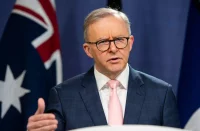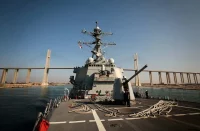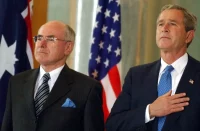Another acute political crisis of the 230-million-population nation was primarily caused by the rapid deterioration of socioeconomic conditions against the backdrop of global inflation and the rise in prices of energy and food products as well as fears for a further economic downturn among the population. In just a month, the Pakistani rupee fell tenfold against the dollar. According to the World Bank, its consumer price index for food was 45.1 percent YoY — the second highest in South Asia after Sri Lanka. The highest annual price rise on record is driven mainly by skyrocketing food, electricity, and transportation prices. The World Bank predicts that by the end of the year, about 4 million Pakistanis will live under the poverty threshold with income below average ($3.6 a day). Moody’s warned that a default is “a real possibility.” Despite hopes for US assistance, the IMF delays a $6bn term loan agreement.
As the government of Prime Minister Shehbaz Sharif — who came to power in April 2022 following the accusations of former Prime Minister Imran Khan of inefficient economic management and misguided foreign policy towards China and Russia — failed to turn the country around but only exacerbated its economic crisis, Pakistan’s elites now happen to find themselves in a vulnerable position. In addition, the overthrow of popular Imran Khan led to the Pakistan Movement for Justice political association (Tehrik-e-Insaf) gaining greater influence in the country, which spurred nationwide political unrest with a call for early parliamentary elections and civil superiority, i.e., limiting the army’s influence on the internal politics. All that combined ignited the economic situation which has already been deteriorating and increased public dissatisfaction with the ruling regime’s inability to stabilize the situation.
The arrest of Imran Khan under a vain pretext on May 9 followed by the subsequent events testify to the crudity of this provocation by the Pakistani authorities and the inability to predict the possible consequences of their actions. Despite Imran Khan’s long-standing confrontation with the authorities, his arrest in the Islamabad High Court came around unexpectedly: the authorities had not dared to take such a radical step before. They did not predict such a reaction from the population and the opposition, the scale of the protests, and the radicalization of speeches against the police and the army. This is evidenced by the fact that neither Prime Minister Shehbaz Sharif (he was in London), nor General Asim Munir, the Chief of Staff of the Pakistani Army (he was in Oman) were in the country at such a difficult moment. The ex-prime minister’s arrest was preceded by his participation in an opposition rally held the day before, during which he directly accused the army leadership and Pakistan’s interdepartmental intelligence of organizing an assassination attempt on him in Vizarabad in November. Then he suffered a gunshot wound in the thigh during a street appeal to his supporters. As Imran Khan argued, the army has a strong influence on politics in Pakistan — power in the country passes from one corrupt political clan to another under their patronage. He urged his supporters to fight for freedom against “a corrupt clique of swindlers solicited from abroad.”

After a vote of no confidence in the government of Imran Khan and his resignation was announced, he was isolated in the political landscape of Pakistan. Neither numerous accusations of corruption and misappropriation of public funds (about 200 criminal cases), nor the organization of a demonstrative assassination forced him to leave the country, a move the authorities expected.
Moreover, he became the opposition leader, and the Pakistan Movement for Justice he leads won the local elections in the fall of 2022 in the Punjab province.
Polls show that his party has a good chance to win in the Pakistani parliamentary elections in October 2023.
Since Pakistan’s independence in 1947 to the present day, there have been 34 prime ministers and acting prime ministers in the country. Therewith, in less than 75 years, there have been several periods, with a total duration of about 20 years, when Pakistan had no prime minister at all.
Against the backdrop of severe socioeconomic challenges, all Pakistani political forces are interested in reducing political confrontation in the country as soon as possible and, according to political experts, the only power that can achieve this goal is the armed forces as a guarantor of the country’s constitution and independence. Therewith, according to their forecasts, three scenarios are possible:
– The traditional political elites, the parties of Sharif and Bhutto, will be able to retain power, suppress the unrest with the help of the army, reverse the growth of protest moods (make Imran Khan banned from participating in political activities) and win parliamentary elections in the fall;
– Imran Khan’s release followed by the opposition’s victory in the elections five months later and the formation of a new government;
– To avoid chaos in the country, the army takes the power to lead the country in the person of a strongman, for example, General Asim Munir, Chief of Staff of the Army.
As for the external contour, Pakistan has traditionally been a very important partner of Beijing while also having many important projects with Moscow: from constructing an intra-Pakistan gas pipeline to importing Russian oil, from joint efforts to establish peace in Afghanistan to military and technical cooperation. Regardless of the political situation, Pakistan remains a significant regional power, an SCO member, and one of the leading Islamic countries.














Comments